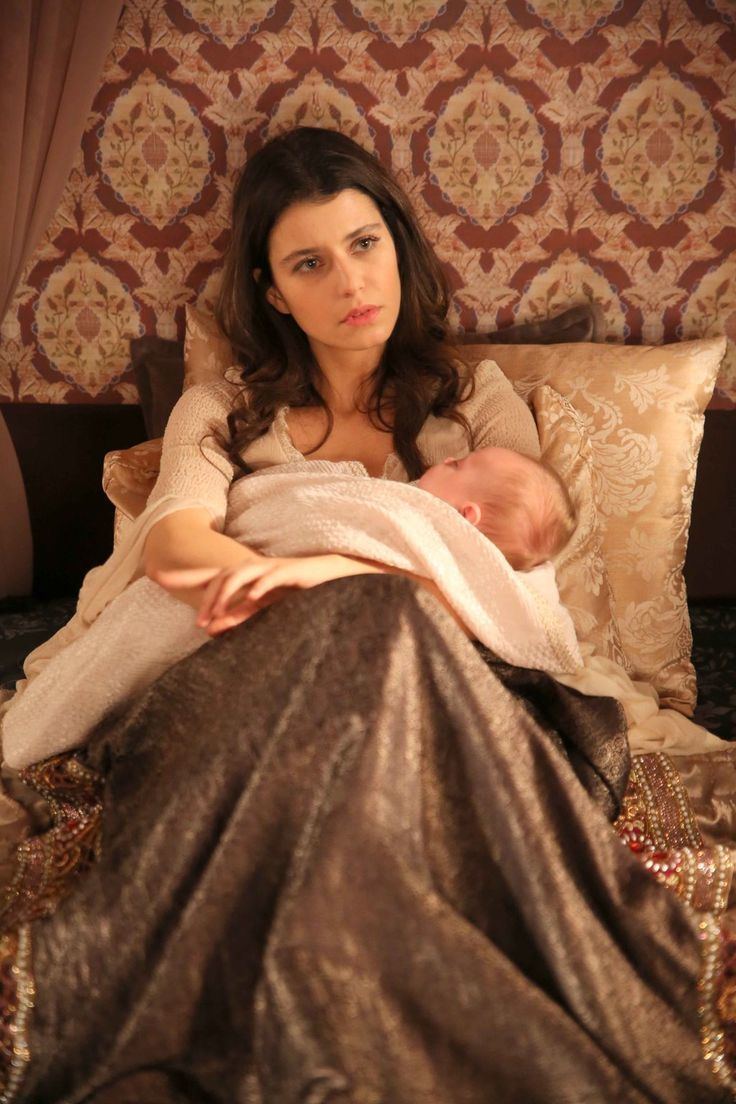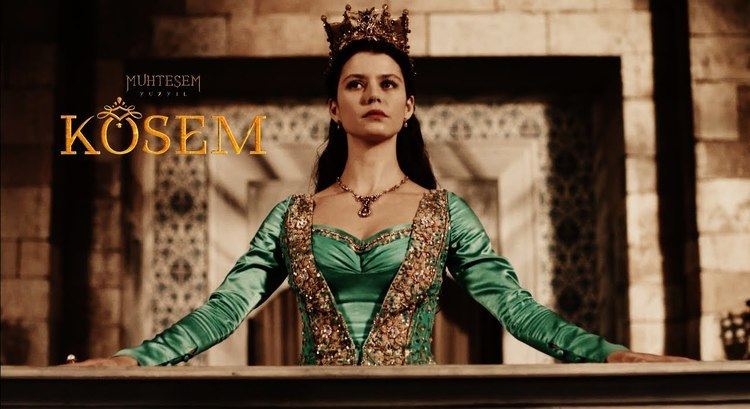Predecessor None Name Kosem Sultan Successor Turhan Hatice Sultan | Predecessor Herself Nationality Ottoman | |
 | ||
1st Regency 10 September 1623 – 1632 2nd Regency 8 August 1648 – 2 September 1651 Similar People Ahmed I, Safiye Sultan, Murad IV, Roxelana, Beren Saat Born c. 1589 (age 61–62), Tinos, Republic of Venice or Bosnia Died 2 September 1651 (aged 61–62) Constantinople, Ottoman Empire | ||
Who is kosem sultan
Kösem Sultan ([cøˈsem sulˈtan]) (c. 1589 – 2 September 1651) – also known as Mahpeyker Sultan ([mahpejˈkeɾ sulˈtan]; Māh-peyker) – was one of the most powerful women in Ottoman history. Kösem achieved power and influenced the politics of the Ottoman Empire when she became haseki sultan as favourite consort and later legal wife of Ottoman Sultan Ahmed I (r. 1603–1617) and valide sultan as mother of Murad IV (r. 1623–1640) and Ibrahim (r. 1640–1648), and grandmother of Mehmed IV (r. 1648–1687). She was one of the prominent figures during the Sultanate of Women.
Contents
- Who is kosem sultan
- Is beren saat becoming kosem sultan in magnificent century
- Early life
- As consort
- First tenure
- Second tenure
- Third tenure
- Death
- Charities
- Sons
- Daughters
- In popular culture
- References

Kösem lived in the Ottoman Empire during the reign of six sultans, Ahmed I, Mustafa I, Osman II, Murad IV, Ibrahim, and Mehmed IV. After her death, she was known by the names "Valide-i Muazzama" (magnificent mother), "Vālide-i Maḳtūle" (murdered mother), and "Vālide-i Șehīde" (martyred mother).

Is beren saat becoming kosem sultan in magnificent century
Early life
Kösem was of Greek origin; she is generally said to be the daughter of a priest on the island of Tinos whose maiden name was Anastasia but these views do not seem reliable. She was bought as a slave by the Bosnian governor, and sent, at the age of fifteen, to the harem of Sultan Ahmed I. Upon her conversion to Islam, her name was changed to Mahpeyker (Moon-Shaped), and later by Sultan Ahmed I to Kösem (guide).
As consort
In the early reign of Ahmed, there was a change in the imperial harem hierarchy.

Safiye Sultan, Ahmed's powerful grandmother who continued to manage the harem was deprived of power and retired in Old Palace (Eski Saray) in January 1604.
One year later, Handan Sultan, Ahmed's mother who had become the chief of the imperial harem as Valide Sultan died in November 1605. This condition permitted the rise of Kösem to the top of the imperial harem hierarchy.

As a Haseki Sultan to Ahmed I, she had a long career as a guardian of şehzades. It is possible that the significant modifications in the pattern of succession to the throne during Ahmed's time owed something to her efforts. She must have realized the personal gain that might stem from the transition to seniority, coupled with the fact that she was no longer haseki but had son "in waiting". According to Venetian ambassador, Kösem "lobbied to spare Mustafa the fate of fratricide with the ulterior goal of saving her own son from the same fate." During her time as haseki sultan, Kösem received 1,000 aspers a day.

Venetian ambassador Contarini reported the beating of a woman ordered by the Sultan in 1612. The woman who had irritated Kösem may be identified as her fellow consort Mahfiruz. Kösem also made efforts to keep her brother-in-law, Mustafa, safe from execution, and saw an obstacle in Mahfiruz who was lobbying in favor of her own son.

Like his parents, Ahmed died at a young age (27 years) on 22 November 1617. This made Kösem lose her position in Topkapi Palace and she retired in Old Palace during the reign of her brother-in-law Mustafa I and step-son Osman II.
First tenure
Kösem came back in power when her son ascended to the throne on 10 September 1623 as Murad IV. Since her son was a minor, she was appointed not only as a Valide Sultan but also, as an official regent (Naib-i-Sultanat) during his minority, from her son's ascension on 10 September 1623 until 18 May 1632. During most of Murad IV's reign, she essentially ruled through him and effectively ran the empire, attending meetings of the divan (cabinet) from behind a curtain, even after 1632, when she was no longer regent.
During the early years, the Empire fell into anarchy; the Safavid Empire invaded Iraq almost immediately, Northern Anatolia erupted in revolts, and in 1631 the Janissaries stormed the palace and killed the Grand Vizier, among others. Murad feared suffering the same fate as his elder brother, Osman II, and decided to assert his power. He later tried to quell the corruption that had grown during the reigns of previous Sultans, and that had not been checked while his mother was ruling through proxy. His absolute rule started around 1632, when he took the authority and repressed all the tyrants, and he re-established the supremacy of Sultan.
Second tenure
Kösem's other son, Ibrahim, lived in terror of being the next of his brothers to be executed by his brother's order. His life was only saved by the intercession of his mother Kösem Sultan. After Murad's death, Ibrahim was left the sole surviving prince of the dynasty. Upon being asked by Grand Vizier Kemankeş Kara Mustafa Pasha to assume the Sultanate, Ibrahim suspected Murad was still alive and plotting to trap him. It took the combined persuasion of Kösem and the Grand Vizier, and personal examination of his brother's dead body, to make Ibrahim accept the throne. When Ibrahim succeeded his brother in 1640, he proved too mentally unstable to rule. This enabled Kösem to continue in power. He was encouraged by his mother to distract himself with harem girls. The distractions of the harem allowed Kösem to gain power and rule in his name, yet even she fell victim to the Sultan's disfavor and left the Imperial Palace.
Ibrahim's behaviour sparked talks of deposing the sultan. In 1647, the Grand Vizier Salih Pasha, Kösem Sultan, and the şeyhülislam Abdürrahim Efendi unsuccessfully plotted to depose the sultan and replace him with one of his sons. Salih Pasha was executed and Kösem Sultan was exiled from the harem. The next year the Janissaries and members of the ulema revolted. On 8 August 1648, Ibrahim was dethroned, seized and imprisoned in Topkapı Palace. Kösem gave consent to her son's fall, saying "In the end he will leave neither you nor me alive. We will lose control of the government. The whole society is in ruins. Have him removed from the throne immediately." The new Grand Vizier, Sofu Mehmed Pasha, petitioned the Sheikh ul-Islam for a fatwā sanctioning Ibrahim's execution. It was granted, with the message "if there are two Caliphs, kill one of them." Kösem also gave her consent. Two executioners were sent. Ibrahim was strangled on 18 August 1648.
Third tenure
Eventually Kösem presented her seven-year-old grandson Mehmed IV to the divan with the words "Here he is!, see what you can do with him!" Thus, she declared herself regent for the second time, and ruled openly again between 1648 and 1651. At the head of the Ottoman Empire stood the child sultan, Mehmed IV. With Mehmed's ascendancy, the position of Valide Sultan ("mother of the reigning sultan") should have gone to his mother Turhan Hatice Sultan. However, Turhan was overlooked due to her youth and inexperience. Instead Kösem Sultan was reinstated to this high position. Kösem Sultan was a valide (mother) under two sons, thus having the more experience of the two women.
Death
It was Mehmed IV's mother, Turhan Hatice, who proved to be Kösem's nemesis. When she was about 12 years old, Turhan was sent to the Topkapı Palace as a gift, from the Khan of Crimea, to Kösem Sultan. It was probably Kösem Sultan who gave Turhan Hatice to Ibrahim as a concubine. Turhan turned out to be too ambitious a woman to lose such a high position without a fight. In her struggle to become Valide Sultan, Turhan was supported by the chief black eunuch in her household and the grand vizier, while Kösem was supported by the Janissary Corps. Although, Kösem's position as Valide was seen as the best for the government, the people resented the influence of the Janissaries on the government.
In this power struggle, Kösem planned to dethrone Mehmed and replace him with another young grandson. According to one historian, this switching had more to do with replacing an ambitious daughter-in-law with one who was more easily controlled. The plan was unsuccessful as it was reported to Turhan by Meleki Hatun, one of Kösem's slaves, that Kösem was said to be plotting Mehmed's removal and replacement by another grandson with a more pliant mother. Whether Turhan sanctioned it or not, Kösem Sultan was murdered three years after becoming regent for her young grandson. It is rumoured that Turhan ordered Kösem's assassination. Furthermore, some have speculated that Kösem was strangled with a curtain by the chief black eunuch of the harem, Tall Suleiman. The Ottoman renegade Bobovi, relying on an informant in the harem, states that Kösem was strangled with her own hair.
After her death her body was taken from Topkapi to the Old Palace (Eski Sarayı) and then buried in the mausoleum of her husband Ahmed I.
Charities
Kösem made charities and donations both for people and ruling class in the state. She visited the prisons every year, paid the debts of imprisoned people, supplied the trousseaus of daughters of poor families and servant girls trained by her, wedded them and won their confidence. She had Çinili Mosque and a school near it constructed in Üsküdar in 1640 and she also had the small mosques and fountain of the Valide madrasa of Anadolu Kavağı, fountain in Yeni Kapı, Valide Han mosques, fountains in Beşiktaş and Eyüp and Valide Caravanserai in Çakmakçilar Yokuşu built. It is also known that she had also laid fountains built outside the city of Istanbul.
She financed irrigation works in Egypt and provided relief for the poor people of Mecca. Kösem was renowned for her charity work and for freeing her slaves after 3 years of service. When she died the people of Constantinople observed three days of mourning.
